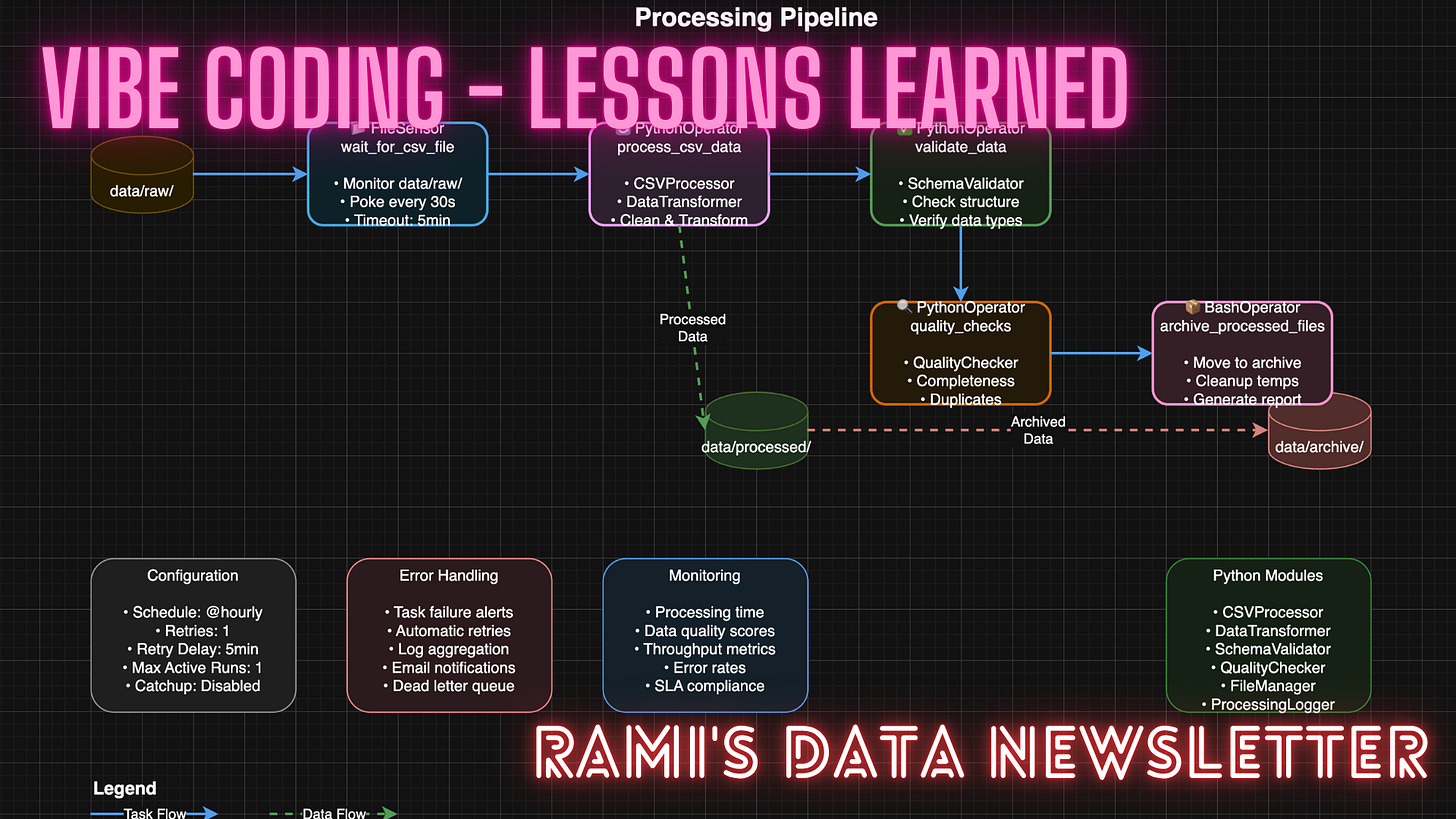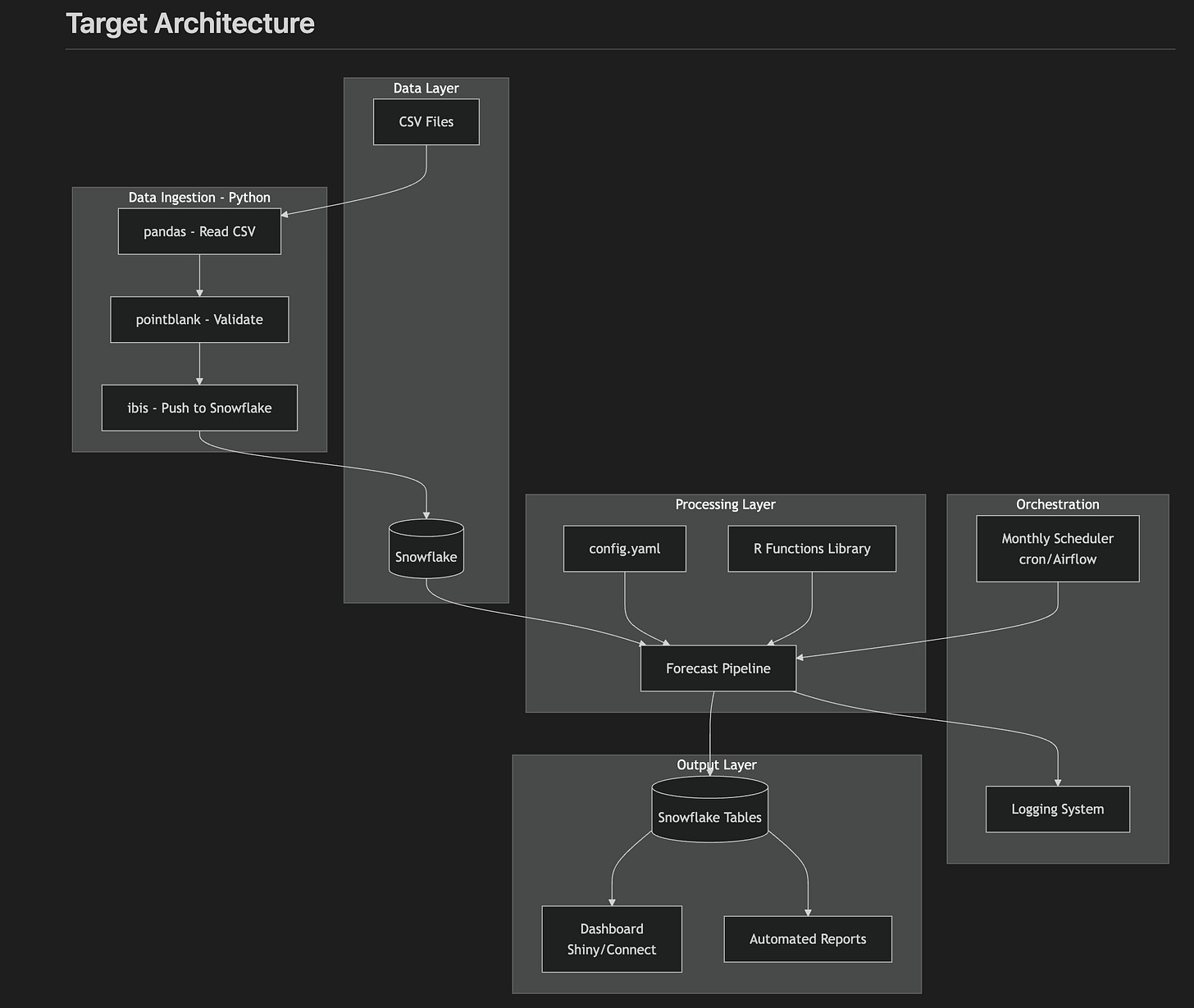Vibe Coding - Lessons Learned... So Far
I heavily adopt vibe coding in my workflow. Here is my learning so far.
I have been writing code daily for more than a decade now, and in the recent weeks I have spent a significant amount of time to learn how to leverage “vibe coding” in my workflow.
I don’t like the term vibe coding; I also think this term is misleading, and it was abused by YouTubers and other social media influencers, showing a partial picture of the use cases and not the full picture.
Vibe Coding is not (yet) a magic tool that creates code with no effort or just by using a prompt ❌. Rather, it is a mind shift in designing and writing code ✅.
Here are my main use cases:
Create a data ingestion process
Build a data pipeline with Airflow
Set a forecasting pipeline
Debugging
Create documentation
Code Review
Lessons learned 👇🏼:
Planning is critical for the success of this process. Having a brainstorming session and aligning it with the AI tool will reduce ambiguity and improve the code generation process. This process may take some time, but it is worth the investment
Validation - When giving instructions to the AI tool, I often ask it if the instructions are clear. The tool typically will flag if there are missing details or ask you about potential improvement
Step-by-step - once the planning phase is done, I usually build each component in the plan, review and test it, and then continue to the next component. This helps me to understand the functionality of the code and debug issues (with AI) when things are not working as expected
Prototype first - following the previous point, I use Quarto/Jupyter notebook to prototype first before packaging the code
ETL - I found that having a table where each row represents a set of instructions for a data transformation is a very efficient way to build a data transformation process
Lift my coding skills - working with an AI tool is equivalent in my mind to working with a programmer with 30 years of experience. It definitely improved my programming skills by introducing me to new concepts
My conclusion so far is that Vibe Coding will facilitate the shift of traditional software engineering into architecture roles. While AI creates opportunities for code generation accessible to a non-technical audience, those with programming knowledge could potentially leverage Vibe Coding to its full extent.
Any thoughts?




Good read. Can you expand on having transforms in a dedicated row of a table?